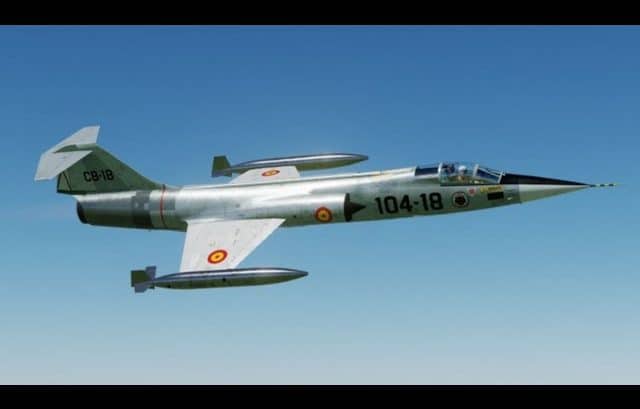The F-104 Starfighter was an innovative aircraft that high-altitude flight during the Cold War. The plane was developed to be an interceptor and tactical fighter for the USAF as well as its NATO allies.
The Starfighter
MiG-15s were small, fast, and agile in combat. Some American fighters thought they were outmaneuvered by the enemy. Kelly Johnson, a legendary Lockheed engineer, took into consideration the suggestions of veterans and wanted to design a dedicated interceptor given the odds against the new Soviet fighter. The aircraft to be developed had to be small, light, and fitted with a powerful engine.
The Starfighter became the first American interceptor that can fly at sustained speeds above Mach 2, thanks to the 14,800-pound thrust J79 engine of General Electric and afterburner. The approximate range was over 1,080 miles, with a service ceiling of 58,000 feet as well as a climb rate of 48,000 feet per minute, giving it a formidable fighter.
Missile With a Man In It
First flown in 1954, the aircraft was known for its distinctive shape and innovative design. It features a slender fuselage, short wings, as well as a pointed nose which gave contributed to its futuristic appearance.
The Starfighter had a long, thin, fuselage with stubby wings that looked more like a missile than a conventional aircraft design. It earned the nickname, “missile with a man in it.”
It’s equipped with a powerful engine that could reach speeds of Mach 2.2 as well as an altitude of over 100,000 feet. It also has a wingspan of 20.9 feet, a length of 54,7 feet, as well as a height of 13.4 feet with a maximum takeoff weight of approximately 29,055 pounds.
Widowmaker
Although it made a fantastic interceptor because of its speed and agility, the plane was also challenging to fly, causing high accident rates, and earning the reputation the “widowmaker.”
Although the Starfighter was a reliable platform, it was prone to engine failures. West Germany paid a heavy price for it. Out of the 91 aircraft it purchased, over 292 crashed, which resulted in the loss of 115 pilots. Despite this, it still became an iconic symbol of Cold-war era aviation technology.
NASA’s F-104 Starfighters
The F-104s were destined to serve in NASA doing so at an extreme regime of high-speed flight research. From August 1956 onwards, the Dryden Flight Research Center of NASA flew the Starfighters for different tests and missions.
NASA used 11 aircraft for the next 38 years, with the last flight taking place at Edwards Air Force Base in February 1994. In 2005, Gray Creech from NASA Dryden Flight Research Center stated that the Starfighters gave valuable flight research data on roll coupling, reaction control system research, and handling characteristics.
It also flew safety chase missions that supported advanced research aircraft, that includes the wingless lift body vehicle which was flown at Dryden during the late 1960s and 1970s.
Valuable Aircraft
All in all, F-104 Starfighters proved to be a highly valuable aircraft NASA has ever used for flight research and support aircraft, serving for about 40 years, a distinction that only a few aircraft within NASA have ever accomplished.



